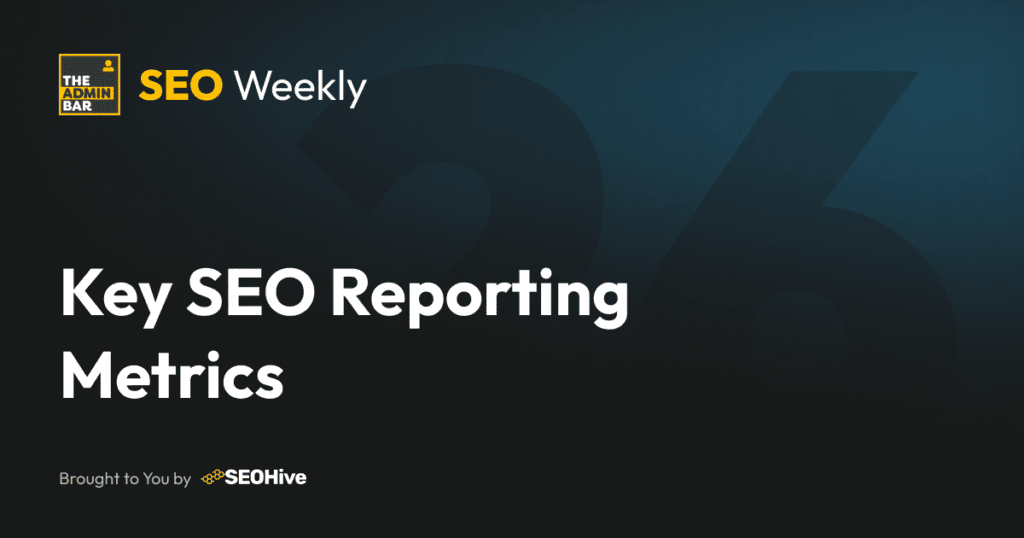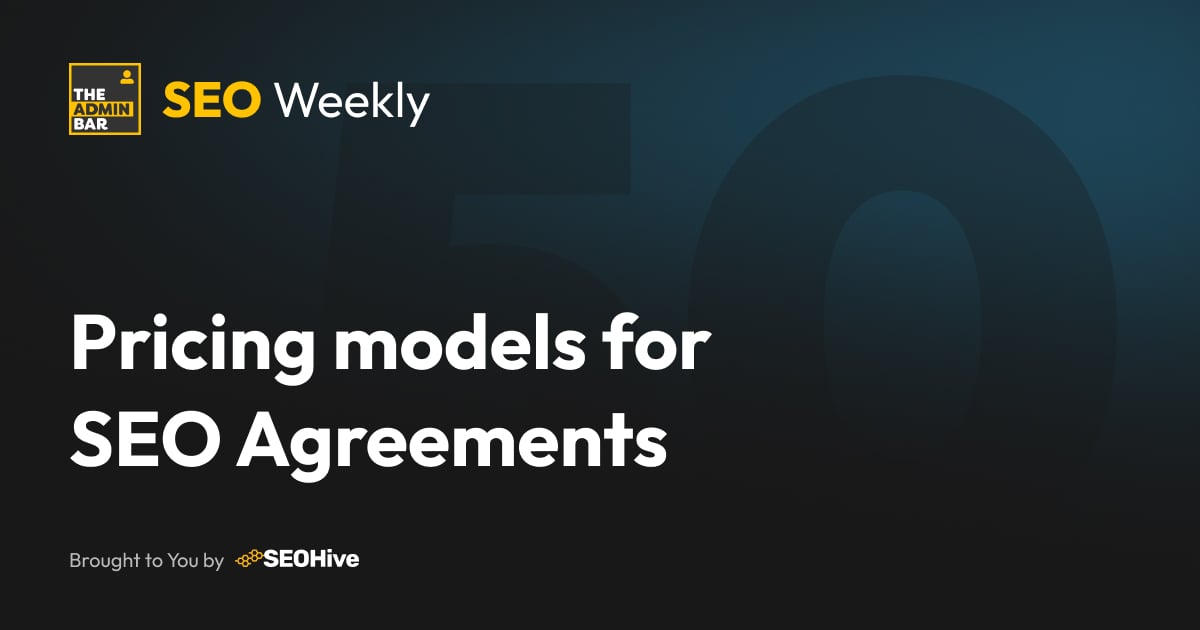So here’s SEO weekly no 26 – can’t believe we’re already halfway through the year! I’d love to know how your business is doing as we’ve closed out Q2 – are you where you want to be? Ahead? Behind? 🤨
That kinda ties in with this week’s theme – all about reporting and tracking progress…
In the agency land, how we report SEO progress to our clients can be just as important as the work itself. I’ve seen many agencies lose clients despite delivering solid results, simply because they failed to connect their SEO efforts to meaningful business outcomes.
Beyond Rankings and Traffic
I often say “Traffic is a vanity metric.”
I also often say to clients, “It’s not actually that hard to get 100,000 people to view your website, but getting 1,000 to view it when they’re ready to buy or inquire is a very different challenge.”
While rankings and traffic have their place, they’re just the beginning of the story… I’ve been in a number of meetings where an agency proudly presents improved positions and growing visitor numbers, only to face the dreaded question: “But how is this helping my business? My sales haven’t moved!”
The truth is, clients don’t hire you for rankings or traffic – they hire you for what those things represent: more customers, more sales, and ultimately, more profit.
Metrics Hierarchy: From Technical to Business Impact
Think of SEO metrics as a pyramid, each level building toward what truly matters to your client:
- Technical Foundation Metrics
- Crawl stats and indexation
- Site health scores
- Core Web Vitals
- Visibility Metrics
- Keyword rankings
- SERP features captured
- Search impressions
- Engagement Metrics
- Organic traffic
- Bounce rate
- Time on site
- Conversion Metrics
- Lead form submissions
- Email signups
- Product purchases
- Business Impact Metrics
- Revenue from organic search
- Cost per acquisition
- Return on SEO investment
The higher you climb this pyramid, the more valuable your reporting becomes to clients.
Tailoring Metrics to Different Types of Client
Different businesses need different metrics to tell their SEO story effectively:
- Ecommerce: Revenue by landing page, average order value
- Lead Generation: Cost per lead, lead quality scores
- Local Business: Google Business Profile conversions, direction requests
- B2B Services: Qualified leads, content engagement by decision-makers
The key is identifying which metrics matter most to each specific client and making sure your reporting pinnacles at that point.
Emerging Metrics Worth Watching
As search evolves, so should our reporting. With the developing focus on AI mentions, us agencies should now also consider tracking:
- AI Overview appearances: How often client content appears in Google’s AI Overviews
- Knowledge panel capture: Brand and topical knowledge panels
- Mentions in AI responses: Frequency of brand mentions in ChatGPT and similar tools
These newer metrics help demonstrate comprehensive search presence beyond traditional rankings, and (as we’ve said in previous SEO Weeklies) it also demonstrates the effectiveness of your wider SEO delivery (EEAT, and so on).
The Report That Actually Gets Used
Here’s a critical point that SO MANY people miss: the best report is worthless if nobody looks at it.
Your reporting should be:
✅ Accessible: Easy to understand without an SEO degree
✅ Actionable: Drives clear next steps for both you and the client
✅ Appropriate: Matches the client’s technical understanding and business needs
✅ Aligned: Connected to the client’s specific business objectives
I’ve seen elaborate 30-page reports that clients never open, alongside a simple dashboard focusing on 3-5 key metrics that clients check weekly.
Remember the yacht and sock analogy from our “How Much SEO is Enough” post? The same principle applies to reporting. Some clients need deep, comprehensive analysis (the yacht approach), while others just need the essential metrics that drive their volume business (the quality socks approach) – I’m not going to get sucked into that again though! 😂
Creating Client-Friendly Reports
The best SEO reports follow these principles:
1️⃣ Start with business impact: Lead with ROI, revenue and growth metrics
2️⃣ Tell a coherent story: Connect technical work to business outcomes
3️⃣ Visualize trends: Show progress over time, not just point-in-time data
4️⃣ Include actionable insights: What the data suggests for future strategy
5️⃣ Appropriate information: Executive summaries for leadership, details for marketing teams
A Simple but Effective Reporting Template
For most clients, a monthly report should include:
- Business metrics summary (30-day and trend view)
- Key wins and milestones achieved
- Performance against agreed KPIs
- Major SEO activities completed
- Upcoming work and focus areas
- Recommendations based on data insights
The “Trusted-Advisor” Advantage
When you consistently connect SEO efforts to your client’s business objectives, something deeper happens: clients stop seeing you as a supplier and start viewing you as a strategic partner. This shift dramatically improves retention and opens opportunities for expanded services.
By focusing on metrics that matter to your clients’ bottom line, you demonstrate that you understand their business, not just search algorithms. This approach positions your agency for longer, more profitable client relationships built on demonstrated value.
Remember, the goal isn’t to overwhelm clients with data – it’s to provide clarity about how SEO is moving their business forward. Master this approach, and you’ll rarely hear the dreaded “What am I paying for?” question again.
…And it’s all down to HOW you present your work — it’s nothing to do with the work itself! 😱
Join the Conversation!
There's a dedicated thread on this post inside of The Admin Bar community. Join in on the conversation, ask questions, and learn more!
Group Thread





